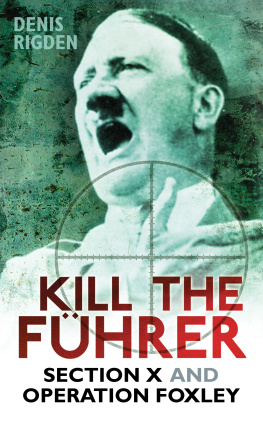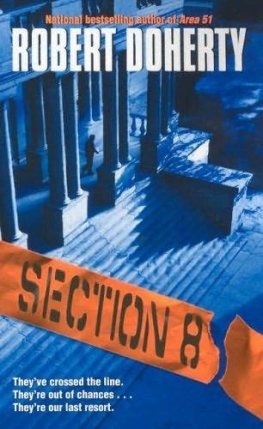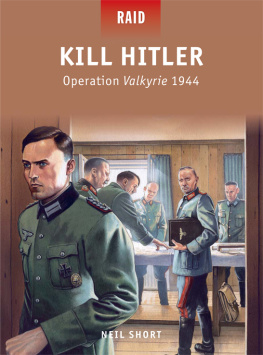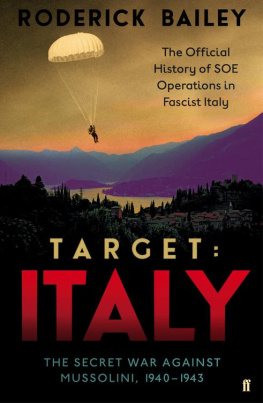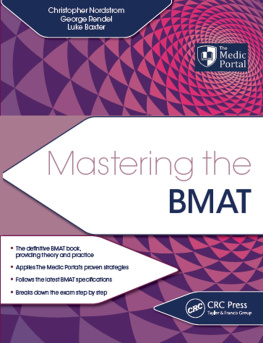KILL THE
FHRER
Dedication
I dedicate this book to my supportive family and friends. I am particularly indebted to my wife Roe (Rosemary), who during much of the writing became widow Foxley.
KILL THE
FHRER
SECTION X AND
OPERATION FOXLEY
DENIS RIGDEN

First published in 1999
This edition published in 2009
The History Press
The Mill, Brimscombe Port
Stroud, Gloucestershire, GL5 2QG
www.thehistorypress.co.uk
This ebook edition first published in 2011
All rights reserved
Denis Rigden 1999, 2002, 2009, 2011
The right of Denis Rigden, to be identified as the Author of this work has been asserted in accordance with the Copyrights, Designs and Patents Act 1988.
This ebook is copyright material and must not be copied, reproduced, transferred, distributed, leased, licensed or publicly performed or used in any way except as specifically permitted in writing by the publishers, as allowed under the terms and conditions under which it was purchased or as strictly permitted by applicable copyright law. Any unauthorised distribution or use of this text may be a direct infringement of the authors and publishers rights, and those responsible may be liable in law accordingly.
EPUB ISBN 978 0 7524 7574 5
MOBI ISBN 978 0 7524 7573 8
Original typesetting by The History Press
Ebook compilation by RefineCatch Limited, Bungay, Suffolk
Contents
Abbreviations and Designations
BSC | British Security Coordination |
DAF | Deutsche Arbeitsfront (German Labour Front) |
EH | The Foreign Offices anti-Nazi propaganda branch, taking its name from its location at Electra House |
FANY | First-Aid Nursing Yeomanry |
FBK | Fhrerbegleitkommando (Hitlers bodyguard) |
FCO | Foreign and Commonwealth Office (formed in October 1968 by the amalgamation of the Foreign Office and the Commonwealth Office) |
FHQ | Fhrerhauptquartier (Fhrer Headquarters) |
ISK | Internationale Sozialistische Kampfbund |
ITWF | International Transport Workers Federation |
MPGD | Mouvement des Prisonniers de Guerre et Deports |
OKW | Oberkommando der Wehrmacht (German High Command of the Armed Forces) |
OSS | Office of Strategic Services |
PIAT | Projector Infantry Anti-tank (a British hand-held weapon) |
PID | Foreign Offices Political Intelligence Department |
PWE | Political Warfare Executive |
RSD | Reichssicherheitdienst |
RSHA | Reichssicherheitshauptamt (Reich Security Main Office) |
RUs | Research Units (the codename for PWEs German broadcasting stations) |
SD | Sicherheitsdienst (SS Security Service) |
SHAEF | Supreme Headquarters Allied Expeditionary Force |
SIS | Secret Intelligence Service |
SOE | Special Operations Executive |
STS | Special Training School |
The staff officers of the Special Operations Executive (SOE) used Secret Intelligence Service-style designations, instead of their own names, when writing minutes and other documents circulated within the organisations headquarters in Baker Street, London. For example, the designation of the Chief (executive head) of SOE was CD and that of the head of the German Directorate was AD/X.
Introduction
Historians of the Second World War could hardly believe what they saw when they picked up their daily newspapers at breakfast time on 23 July 1998. Dominating the front pages were reports revealing something they had never even suspected: that British secret service officers of the Special Operations Executive had plotted to assassinate Hitler during most of the war years.
The media stories on this ultra sensitive Top Secret project, codenamed Operation Foxley, were based on official documents released that morning by the Public Record Office (PRO) at Kew. However, these few hundred papers many of them written in dull military officialese were but the contents of only three of the 971 files relating to SOE activities in Western Europe that the PRO was putting on public display for the first time. The medias sole interest was in Foxley and in a few other headline-grabbing operations, mostly those which, like Foxley, were organised by SOEs mysterious Section X, responsible for operations in Germany and Austria.
My own research into Foxley began much earlier in mid-1996 when I was briefed on the operation by Gervase Cowell, the then SOE Adviser to the Foreign and Commonwealth Office (FCO), who was also Chairman of the Historical Sub-Committee of the Special Forces Club until his death in May 2000. Later, I had similar invaluable help from his successor in the FCO Advisers post, Duncan Stuart. As well as providing much biographical information from SOE staff records, Stuart drew upon then unreleased headquarters files to give me an overall picture of the many different sorts of sabotage and subversion engaged in by Section X and by the German Directorate, that sections name during the last six months of the European war.
Although the Adviser to the FCO (a post abolished early in 2002) has efficiently provided historians with all the help he could, the task of researching into what the Special Operations Executive achieved or failed to achieve has some distinctive problems. Most of these derive from the SOEs wartime archives being woefully incomplete. An estimated 85 to 87 per cent of the Executives papers now no longer exist. Many were consumed by a fire at SOEs headquarters 64 Baker Street, London shortly after the war (arson was not suspected),1 and some of the records held at SOEs Middle Eastern regional office in Cairo were deliberately destroyed when the German army came dangerously near. Yet other SOE documents were lost as a direct or indirect result of enemy action in the various theatres of war, or because wartime record-keeping was sometimes haphazard. Undoubtedly, office work was not always well organised at SOE headquarters, where there was no central registry and where each country section, including Section X, kept it own records in whatever way it thought fit. To top all this, some documents were weeded after the war because they were judged to be unimportant and there was a shortage of shelf space. Historians also have problems with some of the SOE papers that have survived. Some are damaged and difficult to read. The economy paper of the Second World War was thin and frail. Typing was often single spaced and on both sides of a page.
Even when the extant records are considered there are shortcomings. The documents on Foxley that have survived say nothing about how much planning of this never-to-be operation was undertaken between mid-1941, when Section X was given permission to investigate whether Hitler could be assassinated, and mid-1944, when the matter became a topic of regular discussion in SOEs governing Council, not just in Section X. Almost all the sections information about the dictators movements and lifestyle must have been gathered during that three-year period. But that was when the section had a small staff who were almost certainly overstretched with work relating to current operations, most of them successful, some spectacularly so. Clearly, in such circumstances, it would have been impossible to allot many resources to the preliminary planning of Operation Foxley and its companion project, Operation Foxley II, which envisaged the assassination of selected members of Hitlers inner circle, such as Goebbels and Himmler.

